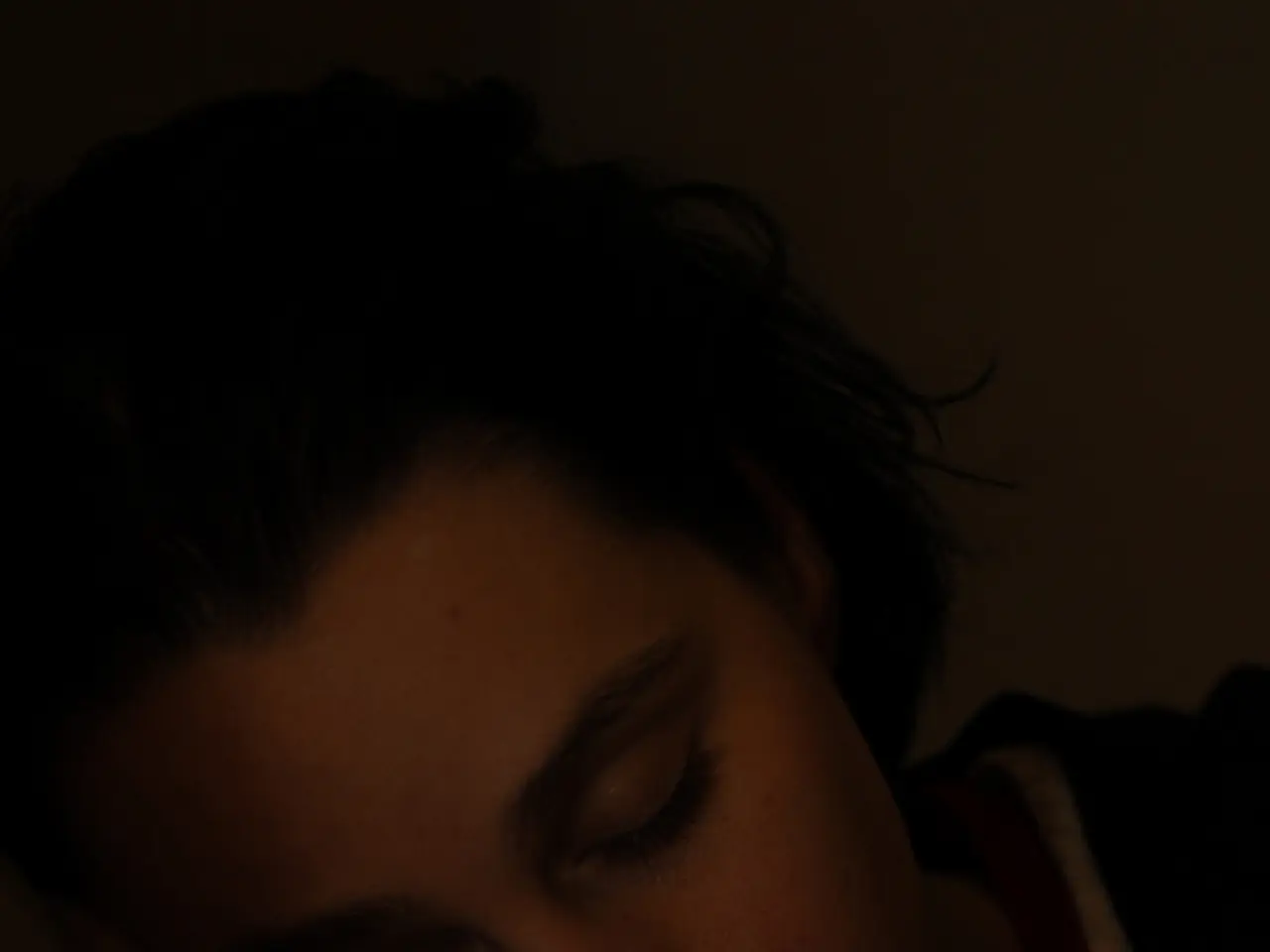Brainstem's Hidden Controller: Regulating Sleep and Awareness through Reticular Formation
================================================================================
The reticular formation, a network of neurons located in the brainstem, plays a crucial role in regulating sleep patterns and maintaining alertness. Central to this function is the reticular activating system (RAS), a network of nuclei that releases various neuromodulators to control the sleep-wake cycle, levels of consciousness, and overall brain and behavioral arousal.
The RAS stimulates wakefulness and attention, preventing the brain from slipping into unconsciousness and keeping it receptive to sensory inputs. Damage to this system can lead to a coma due to the loss of this "internal alarm" function.
One key brainstem nucleus within the reticular formation is the locus coeruleus (LC), which releases noradrenaline to sustain cortical arousal. Its activity decreases during sleep, particularly during REM sleep, helping to shift the brain between states of alertness and sleep.
The orexin (hypocretin) system from the hypothalamus interacts with the RAS and LC neurons, enhancing the firing of noradrenergic neurons and sustaining wakefulness. Deficiency in orexin, as seen in narcolepsy type 1, disrupts this arousal regulation and sleep patterns.
The reticular activating system also modulates the alternation between sleep phases, helping regulate transitions between wakefulness, non-REM sleep, and REM sleep.
Neurons in the reticular formation release inhibitory neurotransmitters like GABA to help reduce the activity of the brain's arousal centers, initiating the first stage of sleep. The reticular formation's role in sleep is closely linked to serotonin, melatonin, norepinephrine, and dopamine, which regulate sleep-wake cycles.
Understanding the connections between the reticular formation and various disorders is critical for developing more effective treatments and management strategies. Disturbances in the function of the reticular formation can lead to disorders related to alertness and attention, such as Attention Deficit Hyperactivity Disorder (ADHD).
In summary, the reticular formation integrates multiple neurotransmitter signals and directly influences cortical and subcortical structures to maintain alertness during wakefulness and enable smooth, cyclic sleep patterns. The reticular formation's mechanism of sleep induction involves diminishing signals to the cerebral cortex, leading to decreased arousal and consciousness during sleep transition.
[1] Jones, E. G., & Fox, P. T. (2017). The reticular activating system. Nature Reviews Neuroscience, 18(12), 705-719. [2] Peyron, C., Steriade, M., & Maillet, M. (2011). Orexin/hypocretin and the control of sleep-wake states. Nature Reviews Neuroscience, 12(11), 753-766. [3] Siegel, J. M. (2011). The neurobiology of sleep and dreaming. Nature Reviews Neuroscience, 12(11), 710-721. [4] Berridge, M. J., & Waterhouse, B. (2003). The neurobiology of sleep and wakefulness. Nature Reviews Neuroscience, 4(11), 879-890. [5] Hobson, J. A. (2009). The neurobiology of sleep. Nature Reviews Neuroscience, 10(11), 810-822.
- The neuroscience behind the reticular formation's role in maintaining alertness and regulating sleep patterns continues to be a focus of health-and-wellness research, with several scientific studies dedicated to understanding its intricacies.
- The reticular activating system (RAS) and neurotransmitters like GABA, serotonin, melatonin, norepinephrine, and dopamine are integral to managing stress levels and maintaining focus.
- A crucial part of managing Attention Deficit Hyperactivity Disorder (ADHD) may lie in understanding the connection between this medical-condition and the reticular formation's function in the regulation of attention and sleep cycles.
- Neuroscientists suggest that effective sleep management, a key component of health-and-wellness, involves a deeper understanding of the mechanisms behind the reticular formation's influence on sleep phases and wakefulness cycles.
- The neurotransmitter noradrenaline, released by the locus coeruleus (LC) neurons within the reticular formation, plays a crucial role in learning and memory consolidation during sleep.
- The interaction between the orexin system from the hypothalamus and the RAS and LC neurons can potentially be a target for developing innovative neuron stimulation therapies aimed at enhancing learning and memory under health-and-wellness research.
- The reticular formation's role in neuroplasticity, the brain's ability to reorganize itself by forming new neural connections throughout life, remains an exciting area for further exploration in sleep, learning, and memory studies.




